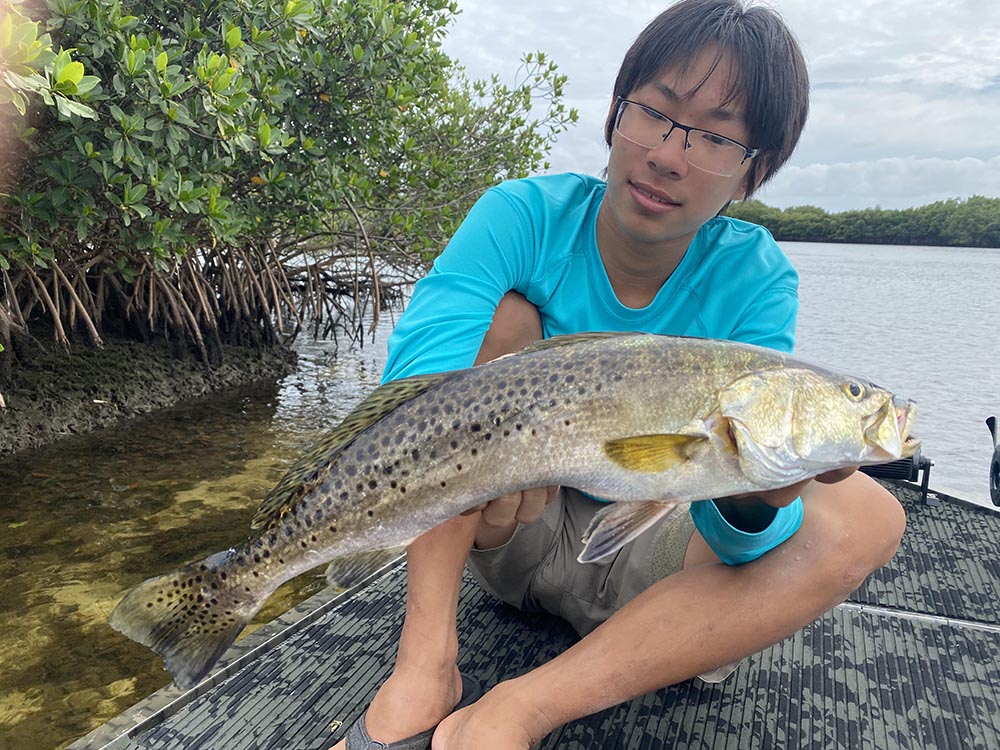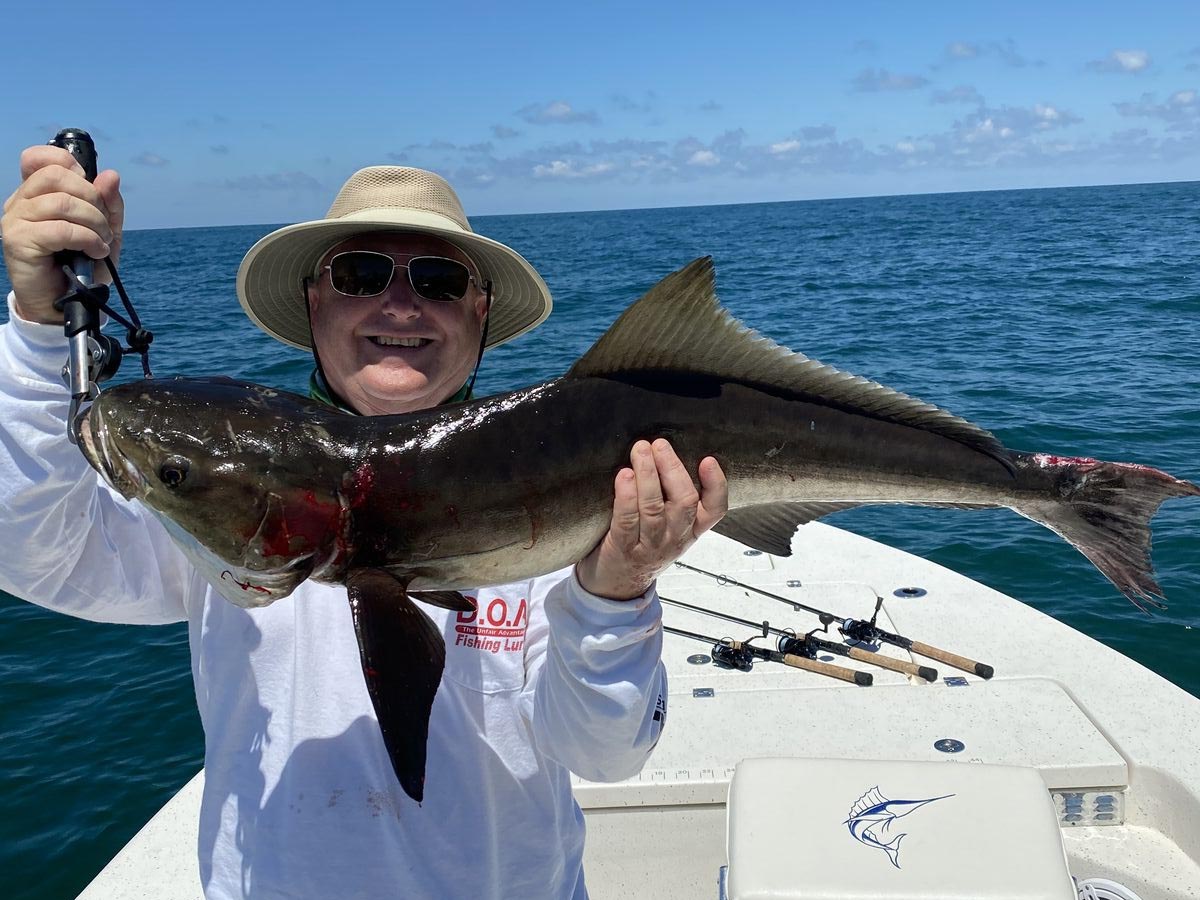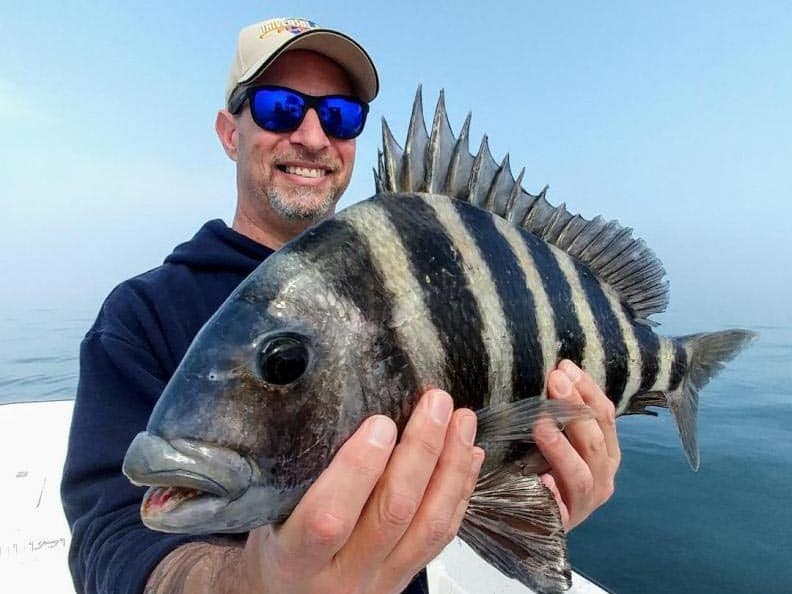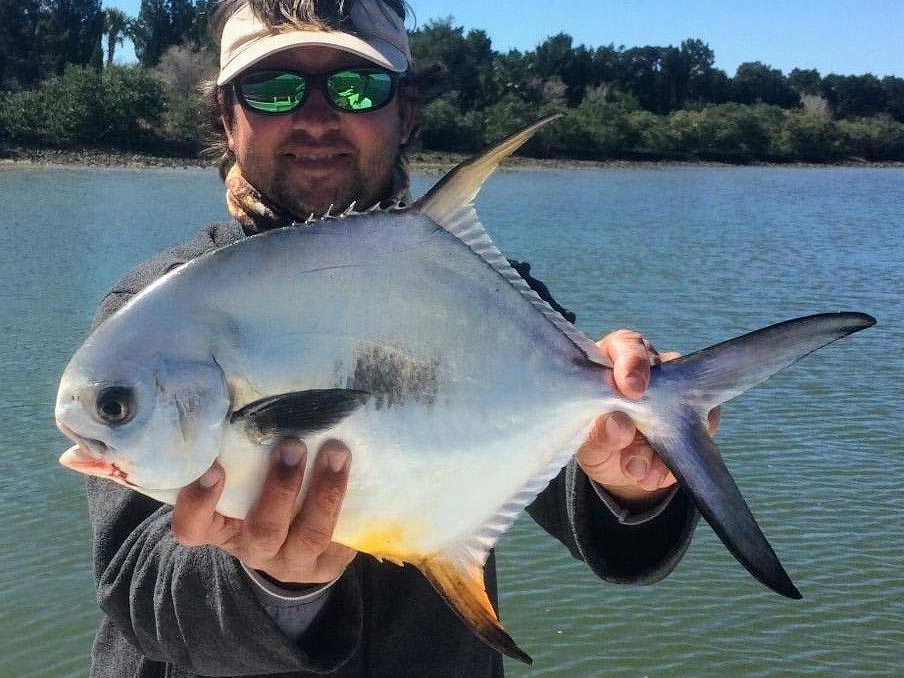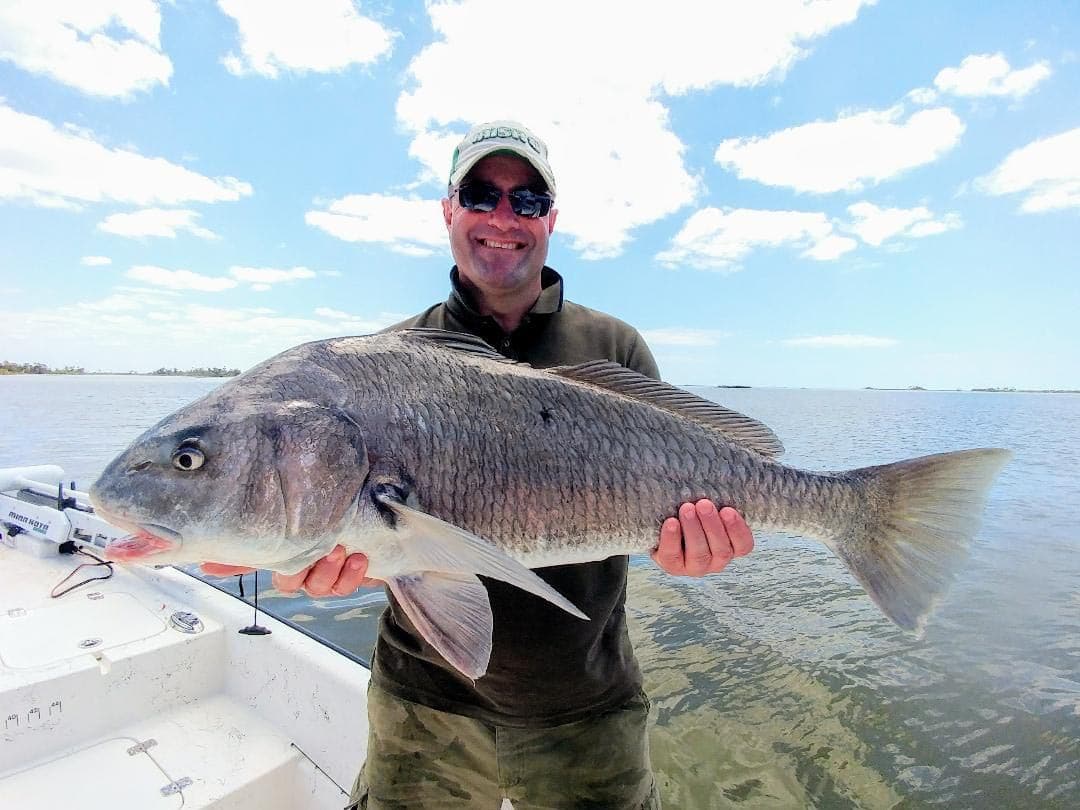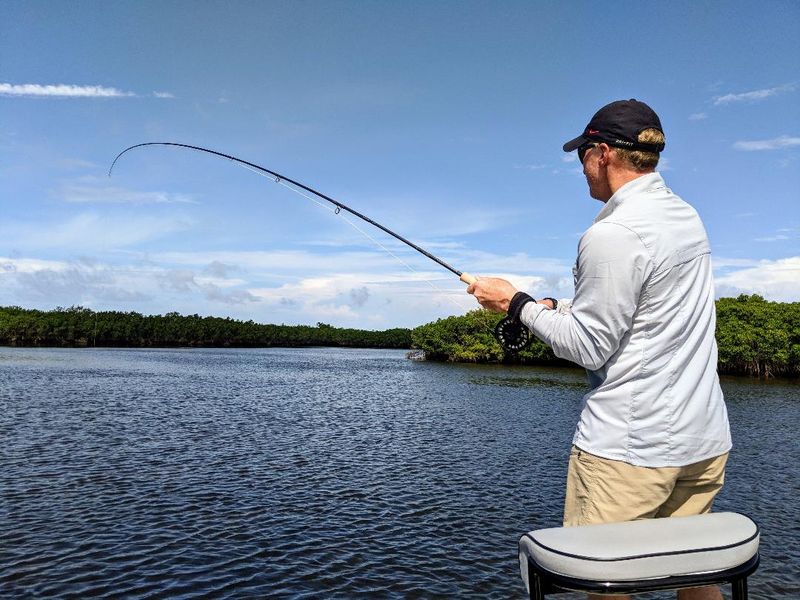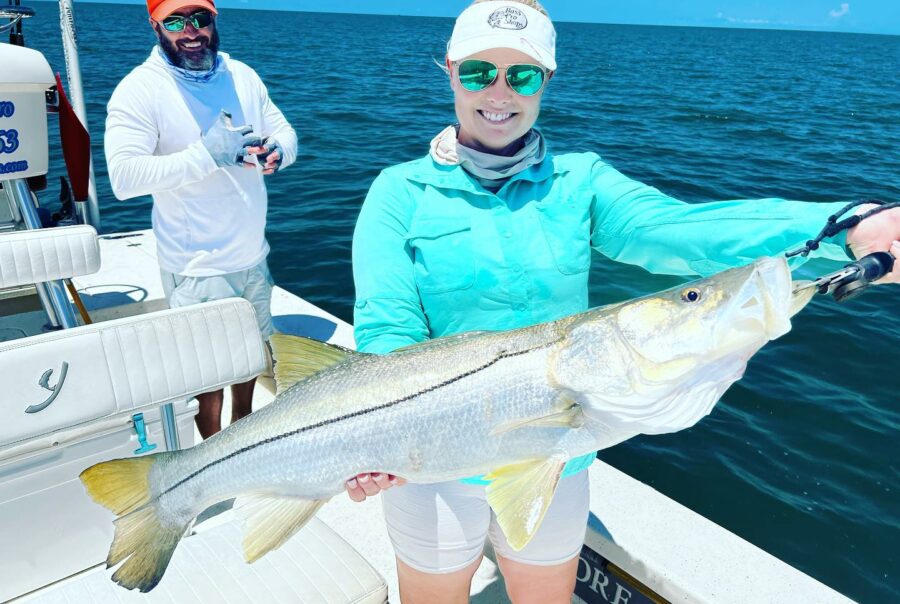Redfish are one of the Big Bend’s top game fish. They can be found from the open gulf and passes, to water so shallow that their backs are exposed.
Crystal River, Ozello, and Homosassa have some of the best rock flats for finding schooling redfish anywhere in Florida. Redfish mature in the backcountry shallows until they are around 3 or 4 years old, which puts the fish around 8-12 pounds. At this point, the fish move offshore to spawn.
The average fish is around 4 or 5 pounds. They can be caught on a variety of natural and artificial baits. Redfish are tireless fighters, capable of long powerful runs. These runs are most enjoyed on 8-12 pound test line, saving 15-20 pound line for the big bull reds.
Redfish can be caught year-round, but March through December are the prime months.


